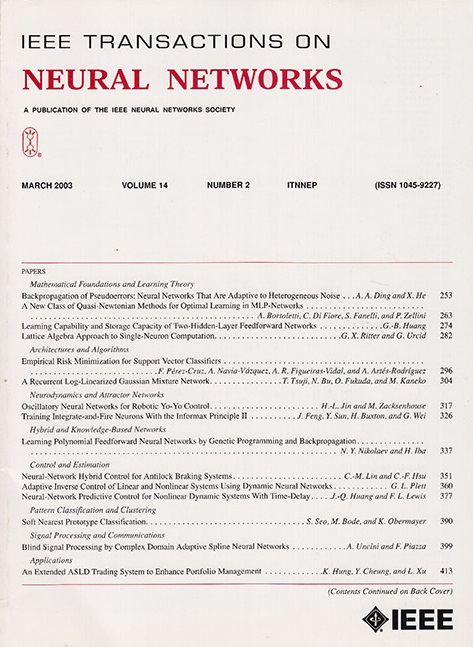EEG-Based Cross-Subject Driver Drowsiness Recognition With an Interpretable Convolutional Neural Network
IF 8.9
1区 计算机科学
Q1 COMPUTER SCIENCE, ARTIFICIAL INTELLIGENCE
IEEE transactions on neural networks and learning systems
Pub Date : 2022-02-16
DOI:10.1109/TNNLS.2022.3147208
引用次数: 27
Abstract
In the context of electroencephalogram (EEG)-based driver drowsiness recognition, it is still challenging to design a calibration-free system, since EEG signals vary significantly among different subjects and recording sessions. Many efforts have been made to use deep learning methods for mental state recognition from EEG signals. However, existing work mostly treats deep learning models as black-box classifiers, while what have been learned by the models and to which extent they are affected by the noise in EEG data are still underexplored. In this article, we develop a novel convolutional neural network combined with an interpretation technique that allows sample-wise analysis of important features for classification. The network has a compact structure and takes advantage of separable convolutions to process the EEG signals in a spatial-temporal sequence. Results show that the model achieves an average accuracy of 78.35% on 11 subjects for leave-one-out cross-subject drowsiness recognition, which is higher than the conventional baseline methods of 53.40%–72.68% and state-of-the-art deep learning methods of 71.75%–75.19%. Interpretation results indicate the model has learned to recognize biologically meaningful features from EEG signals, e.g., alpha spindles, as strong indicators of drowsiness across different subjects. In addition, we also explore reasons behind some wrongly classified samples with the interpretation technique and discuss potential ways to improve the recognition accuracy. Our work illustrates a promising direction on using interpretable deep learning models to discover meaningful patterns related to different mental states from complex EEG signals.基于EEG的可解释卷积神经网络跨主题驾驶员睡意识别。
在基于脑电图(EEG)的驾驶员睡意识别的背景下,设计一个无校准系统仍然具有挑战性,因为不同的受试者和记录会话之间的EEG信号差异很大。已经做出了许多努力来使用深度学习方法从EEG信号中识别精神状态。然而,现有的工作大多将深度学习模型视为黑盒分类器,而模型所学到的知识以及它们在多大程度上受到脑电数据中噪声的影响仍有待探索。在这篇文章中,我们开发了一种新的卷积神经网络,该网络结合了一种解释技术,可以对重要特征进行样本分析以进行分类。该网络具有紧凑的结构,并利用可分离的卷积来处理时空序列中的EEG信号。结果表明,该模型在11名受试者中获得了78.35%的平均准确率,高于传统的基线方法53.40%-72.68%和最先进的深度学习方法71.75%-75.19%。,α纺锤波,作为不同受试者嗜睡的有力指标。此外,我们还用解释技术探讨了一些错误分类样本背后的原因,并讨论了提高识别精度的潜在方法。我们的工作说明了一个很有前途的方向,即使用可解释的深度学习模型从复杂的脑电图信号中发现与不同心理状态相关的有意义的模式。
本文章由计算机程序翻译,如有差异,请以英文原文为准。
求助全文
约1分钟内获得全文
求助全文
来源期刊

IEEE transactions on neural networks and learning systems
COMPUTER SCIENCE, ARTIFICIAL INTELLIGENCE-COMPUTER SCIENCE, HARDWARE & ARCHITECTURE
CiteScore
23.80
自引率
9.60%
发文量
2102
审稿时长
3-8 weeks
期刊介绍:
The focus of IEEE Transactions on Neural Networks and Learning Systems is to present scholarly articles discussing the theory, design, and applications of neural networks as well as other learning systems. The journal primarily highlights technical and scientific research in this domain.
 求助内容:
求助内容: 应助结果提醒方式:
应助结果提醒方式:


